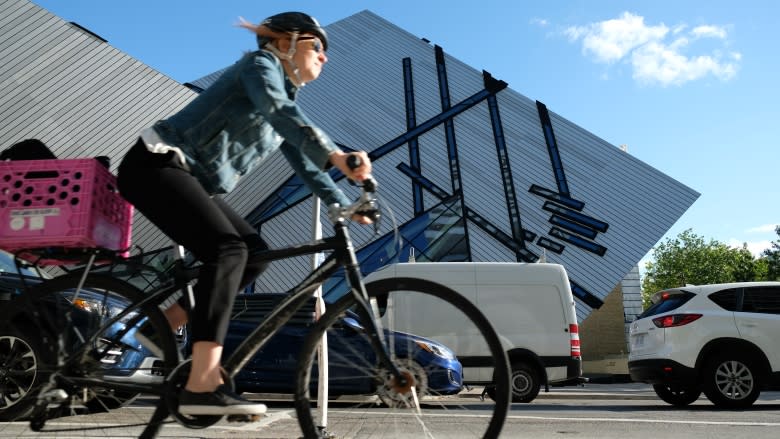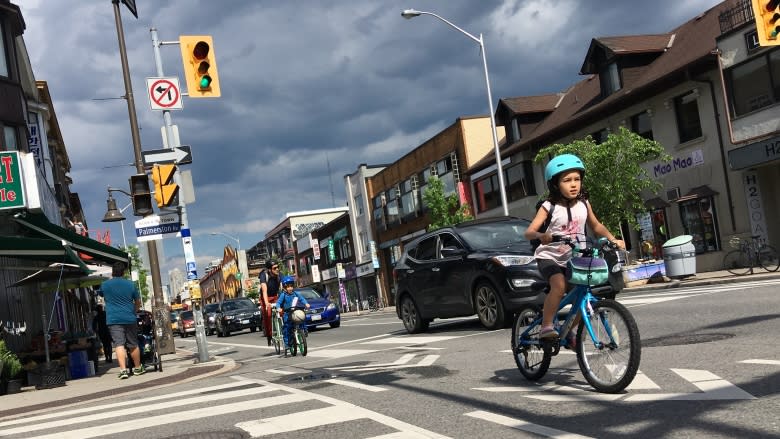Public works committee votes in favour of making Bloor Street bike lanes permanent
Toronto's public works committee voted in favour of making the Bloor Street bike lanes permanent Wednesday night, after hours of public deputations and debate.
City transportation staff recommended the move following a long-awaited report that shows the bike lanes deliver a series of benefits and few drawbacks.
The vote was 4-2, with Coun. Giorgio Mammoliti and Coun. Stephen Holyday opposed.
The matter will now go before council on Nov. 7 for the final decision.
Coun. Mike Layton, a major proponent of the plan, urged the committee to focus on road safety during the debate.
"If getting people home safely at the end of the day to their families … isn't our only and top priority as a city, then we've got to have a real, serious priority check," he told CBC Toronto.
However, Holyday, who is also Tory's newly-appointed deputy mayor, said he didn't think the lanes have drawn enough new riders to justify the increased commute times — an estimated two minutes in the morning and four minutes in the afternoon, according to the report — for motorists.
Slower commutes angering drivers, Holyday warns
He warned snarling traffic may make Bloor more dangerous.
"People get really frustrated and they begin to take chances. They begin to act aggressively. And those are when you have the conflicts — and that really scares me," he said.
Mammoliti also issued a news release condemning the bike lanes.
Hundreds have written letters in support of the lanes, and Cycle Toronto's Jared Kolb says he hopes the "data driven" councillors on the committee will support it.
Kolb says the city is facing a road safety crisis, and that he believes bike lanes can be an "antidote."
Bayview Avenue speed limit could increase
The committee also voted to reverse changes made to Bayview Avenue under the city's Vision Zero plan, which aims to eliminate all road deaths. A stretch of Bayview, between River Street and Pottery Road, had been reduced to 50 km/h, but staff recommended that the road — part of which now has a protected bike lane — have a 60 km/h limit instead.
Why?
Because drivers are routinely speeding. City staff found drivers routinely break the limit by 24 to 30 km/h, something they attribute mainly to the road design.
"Significant differentials in speed are not desirable as they can lead to aggressive driving, rear-end collisions and potentially make the road environment less safe for vulnerable road users crossing at intersections," the report notes.
Geoff Kettel, a cycling advocate who regularly rides in the area, says he's OK with upping the speed limit where there are barriers between cars and bikes, but the city should reconsider in other areas.
"This is not just absolute safety, it's also the psychological safety as well," he said, adding many may avoid riding in the area if they don't have a sense of security.
Those changes will also go before council next month.



